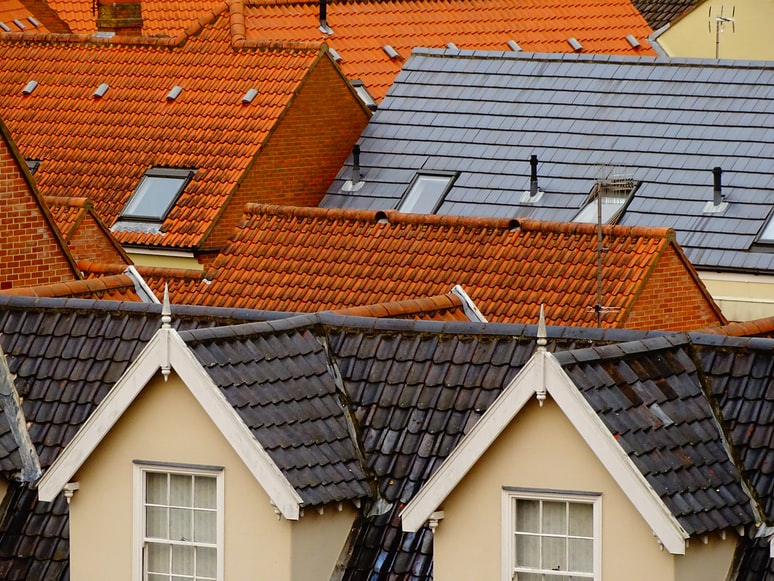
7 DIY Roofing Fails to Avoid
The roof of your property needs to be able to withstand the outdoor elements and harsh treatment. This means it needs to be durable, strong, and properly fitted. Without these characteristics, a roof is simply not strong enough to protect the inside of your home. Installing a new roof requires a lot of expertise and steps need to be carefully followed to ensure a fully functional and stable roofing system.
With that in mind, let’s take a look at some common roofing mistakes and fails that you can avoid next time you need to install new roofing materials.
1. Mismatched roofing materials
You might think that using materials from different manufacturers isn’t that much of an issue, however, it is a problem for two reasons. The first reason is that you’ll be able to spot visible differences on the roof, which leads to an unappealing and unfinished look. For example, materials from different manufacturers will vary in colour and in size. Secondly, using roof shingles from different manufacturers can be dangerous. This is because each product will vary in size and even if you purchase two kinds of shingles they will have different densities and formats. For this reason, it’s important to purchase the same product for your entire roofing area.
2. Securing the shingles incorrectly
It is so important to use nails properly and effectively when securing your roofing material. If they are used haphazardly, the shingles can become loose and fall, or the whole roofing structure can become damaged if you nail the wrong area. This results in a weaker roofing structure that is prone to lots of repair work. Some common mistakes we have come across include:
- Nails that are too short
- An insufficient amount of nails per shingle (you need 4 - 6 nails per shingle)
- Nails in gaps in the roof which fails to secure the material
- Nails placed without care on the roofing material

3. Preventing ventilation in the roof and attic area
We see so many roofs without proper ventilation. Proper ventilation regulates the temperature in the roofing and attic space. There are a few things you can look out for which suggest whether you need to install roof vents in an existing building. Look out for:
Signs of condensation - In the winter months of the year (especially between November and March) spotting visible signs of condensation on the inside of your roof suggests it’s not properly ventilated.
Droplets of water on the ceiling and in the attic area - You may see droplets of water or damp patches in the attic area in your home. Without proper attention, this can lead to mould growth, which can then damage your structure.
Mould growth in your attic area - You might also notice a musty smell or black mould growing on the walls of your attic. Mould has health risks too, it can cause a sore throat, coughing, and asthma attacks.
4. Leaving damages and repairs for too long
A whole new roof replacement isn’t something you want to rush into without proper planning. Having said that, it’s not something you want to delay either. As the roof is the structure that protects your whole house, it’s important to repair any damages as soon as possible.
One of the biggest dangers of not repairing damages is a roof leak. This can then lead to many other problems such as roof rotting and damaged insulation. Wet insulation is not only insufficient, it also presents a number of further risks to your property. From the increased risk of mould growth to damage to the structures within your home or building. As we can see, leaving damages for a prolonged period of time will actually result in you spending more money in the long term.
5. Adding roofing materials on top of existing shingles
Another common mistake to avoid is adding roofing materials to existing shingles. When installing a new roof, it’s essential to tear off the entire existing roofing system. This enables you to fully inspect the roofing structure for any damage. You need to check for any signs of weak spots or holes and check if you have a high-quality underlayment covering the whole roof surface. A good quality underlayment is waterproof and prevents your roof decking from getting damaged by rain, snow, and wind.
Adding materials without removing the old ones also adds unnecessary weight to your roofing structure. Along with the weight of rain and snow, this could cause your roof to bellow and eventually collapse.

6. Too much or too little shingle overhang at the edge of the roof
Shingle overhang at the eaves of your roof needs to be between 6 and 10mm. If the overhang is too much, it can result in shingles coming loose and being blown off during stormy weather. If the overhang is less than 6mm, it can result in water leaking into your roof deck and end up damaging the structure. This mistake can be avoided with advice and installation from a roofing company with expertise in the area.
7. Failing to account for roof pitch
Adding a slope to your roof is essential to ensure water doesn't collect on the top of your property. However, many people underestimate or overestimate how much the roof should slope. If the roof slope isn’t steep enough, this results in pools of water being collected on the top of your roof. Obviously, this poses a risk because it adds weight and increases the chances of a roof leak.
Whether you have a flat roof or a pent roof, each design will need a different slope in degrees. To measure the roof pitch and avoid a slope that is too flat, it’s recommended to get a professional to do the job.

 Rated Excellent
Rated Excellent